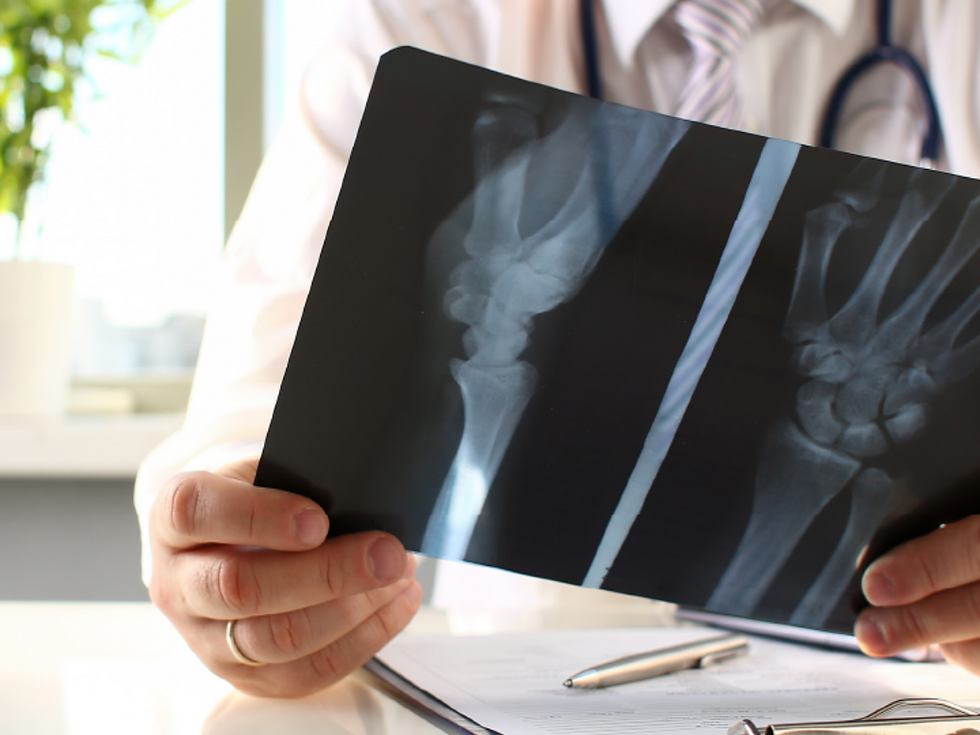How Are Minor Injuries Treated At Urgent Care Facilities?
- NDUC

- Sep 15
- 3 min read
Accidents happen when we least expect them. From slipping on the sidewalk to twisting an ankle during a basketball game, minor injuries are a part of everyday life. When they do occur, many people wonder if they should rush to the emergency room or wait for a primary care appointment. Fortunately, urgent care facilities offer a faster, more affordable solution for non-life-threatening injuries.
So, how exactly are minor injuries treated at urgent care centers? Let’s take a closer look at the process and what patients can expect.

What Counts as a Minor Injury?
Before diving into treatments, it’s helpful to understand what qualifies as a minor injury. Urgent care clinics are equipped to handle injuries that need medical attention but are not severe enough to require an emergency room.
Examples include:
Cuts that may need stitches but are not life-threatening
Mild to moderate sprains and strains
Simple fractures or broken bones that don’t break the skin
Minor burns
Bruises, bumps, or swelling
Sports-related injuries
Work-related accidents such as falls or strains
For any injury involving heavy bleeding, loss of consciousness, chest pain, or difficulty breathing, the emergency room is always the safest choice.
Step 1: Quick Evaluation and Triage
When you arrive at urgent care, the first step is a check-in process followed by an evaluation. Staff will ask about how the injury happened, when the symptoms began, and your level of pain. This helps the medical team prioritize care and ensure you’re treated promptly.
One of the advantages of urgent care is the short wait time compared to the ER. Most patients are seen within 30 minutes, making it a practical choice for injuries that require timely but not critical care.
Step 2: On-Site Diagnostic Testing
Many urgent care facilities, including NextDoor Urgent Care, are equipped with diagnostic tools to confirm the extent of an injury. For example, if you twist your ankle or suspect a fracture, the provider may order an X-ray right on-site.
These services typically include:
Digital X-rays
Basic lab work (if infection is suspected)
Range-of-motion assessments
Having these resources available ensures accurate diagnosis without sending patients elsewhere.
Step 3: Treatment Options for Minor Injuries
Once the injury has been evaluated, the provider will recommend the appropriate treatment. Some of the most common treatments include:
Stitches or wound closures for cuts and lacerations
Splints, braces, or slings to stabilize sprains or fractures
Wound cleaning and bandaging to prevent infection
Burn care for mild burns, including cleaning and dressing the wound
Ice, elevation, or compression for swelling and bruising
Pain management with over-the-counter or prescribed medications
If the injury requires specialized care, the urgent care provider will refer you to an orthopedic doctor, physical therapist, or another specialist for follow-up.
Step 4: Prescriptions and Aftercare
For certain injuries, medication may be prescribed to manage pain, inflammation, or infection. Most urgent care clinics can send prescriptions directly to your pharmacy, so you can pick them up quickly after your visit.
Before leaving, you’ll receive detailed instructions for at-home care, which might include rest, ice, compression, elevation (RICE method), or follow-up appointments if needed. Providers also explain warning signs to watch for, so you’ll know if the injury worsens and requires additional care.
Step 5: Follow-Up Recommendations
Many minor injuries heal within days or weeks, but follow-up can be an important part of recovery. Urgent care facilities often recommend checking back if:
Pain or swelling worsens
Stitches need removal
Movement becomes more restricted
Signs of infection appear (such as redness, warmth, or discharge)
This ensures your injury heals properly and complications are avoided.
The Benefits of Choosing Urgent Care
When it comes to treating minor injuries, urgent care centers strike the perfect balance between speed, quality, and affordability. Compared to the emergency room, they offer:
Shorter wait times
Lower costs
On-site diagnostics and treatment
Extended hours, including evenings and weekends
Experienced providers trained to handle a wide range of injuries
For families in South Euclid, Ohio, and nearby communities such as Cleveland Heights, University Heights, and Lyndhurst, urgent care provides convenient access to immediate medical attention close to home.
Final Thoughts
Minor injuries may not be life-threatening, but they still require prompt and professional treatment. Urgent care facilities are well-equipped to evaluate, diagnose, and treat a wide range of injuries so patients can get back on their feet quickly and safely.
Need treatment for a minor injury today? Call 440-809-8650 or fill out our simple form online to schedule your visit. Walk-ins are always welcome, and our team is ready to provide trusted care when you need it most.





Comments